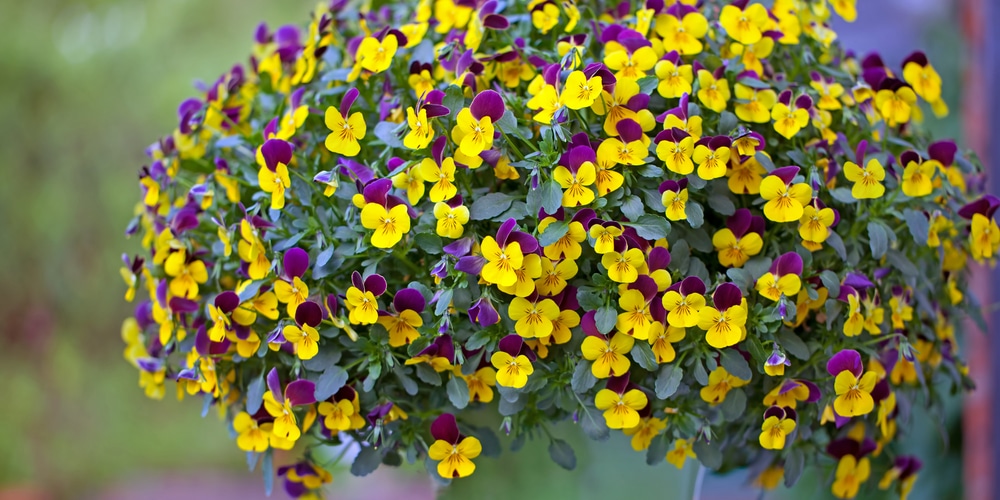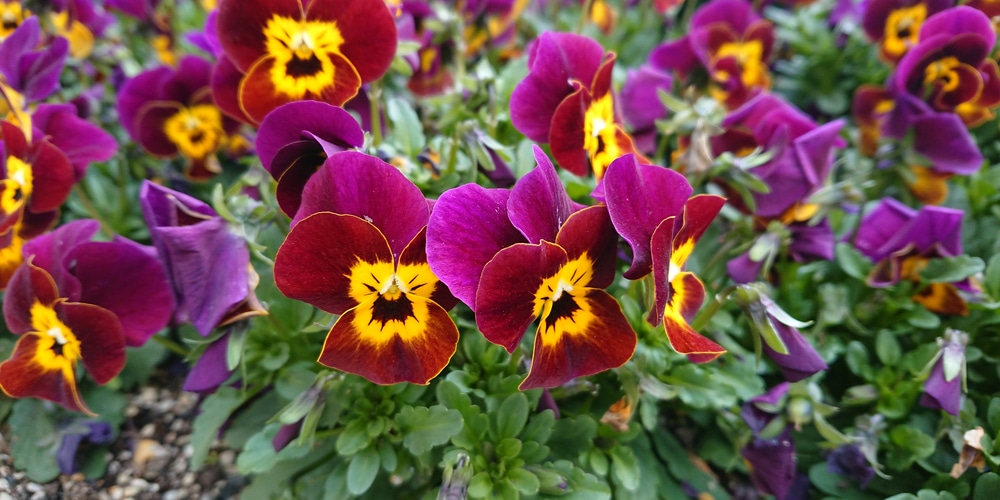If there is one flower representing the spirit of springtime, it’s the pansy. These cheerful blooms can be found in shades of purple, yellow, and white, with multi-lobed petals like a butterfly’s wing.
Pansies thrive in cooler weather and can be seen dotting gardens and window boxes all across the country as winter starts to transition into warmer days.
While they are relatively easy to care for, one of the most common questions about pansies is how often to water them.
Let’s look at some factors that will help you determine how often to give your pansies a drink.
Pansy Watering Needs
Pansies are classified as drought-tolerant, meaning they can withstand periods of time without water.
However, they will perform best if they are kept evenly moist. This means that you should water them regularly, making sure the soil is never allowed to dry out completely.
On average, pansies need about 1 inch of water per week. This can come from rainfall or from watering with a garden hose or watering can. If you live in an area with high humidity, your pansies may need even less water since they will be taking in moisture from the air around them.
Pansies thrive in soil that is rich in organic matter. This means that you should add compost or manure to the soil before planting and then top dress with more compost every few months during the growing season.
In addition to adding organic matter to the soil, you should also make sure it has good drainage. Pansies will not do well in soggy soil, so if your garden tends to stay wet after a rainstorm, you may need to add some sand or gravel to improve drainage.
Signs Your Pansies Are Overwatered
While it’s important to keep your pansies evenly moist, it’s also possible to overwater them. If the soil is constantly wet or soggy, the plant’s roots will start to rot. This can lead to a host of problems, including yellow leaves, wilting, and fungal diseases.
To tell if your pansies are overwatered, start by checking the soil. If it feels soggy or mushy, it’s too wet. The best way to fix this problem is to let the soil dry out for a few days before watering again. You may also need to add some organic matter to improve drainage.
If you’re still not sure if your pansies are overwatered, take a look at the leaves. Yellow leaves can be a sign of too much water, as can wilting and fungal diseases. If you see any of these signs, reduce the amount of water you’re giving your pansies and make sure the soil has good drainage.
Signs Your Pansies Are Underwatered
While it’s possible to overwater pansies, it’s also possible to underwater them. If the soil is too dry, the plants will start to wilt, and the leaves will turn brown and crunchy.
The best way to tell if your pansies need more water is to stick your finger in the soil. If it feels dry several inches below the surface, it’s time to give your plants a drink.
When watering pansies, be sure to give them enough water to saturate the root system. This means that you should water slowly and deeply, allowing the water to seep down into the soil. Once the roots are saturated, you can reduce the amount of water you give your pansies.
Tips for Watering Pansies Effectively
Now that you know how often to water your pansies let’s take a look at some tips for watering them effectively.
Make Sure Your Pansies Have Evenly Moist Soil
The first thing to remember is that pansies need evenly moist soil, so you should water them on a regular basis.
In general, you should water pansies once a week, making sure the soil is never allowed to dry out completely. However, if you live in an area with high humidity, your pansies may need even less water.
Water Early in the Day
Another important tip is to water early in the day so that the leaves have time to dry before nightfall. This will help prevent fungal diseases from developing. Generally speaking, it’s better to water your pansies in the morning, so they have all day to absorb the water.
Watering in the evening can lead to leaf spots, as the leaves will stay wet overnight and be more susceptible to fungal diseases.
Use Room-Temperature Water
It’s also important to use room-temperature water when watering your pansies. Using cold water can shock the plants and make them more susceptible to disease.
Room-temperature water is best, as it won’t shock the plants and will be absorbed more easily.
Use a Watering Can or Garden Hose
A watering can is a great way to water your pansies because it provides a gentle stream of water that won’t damage the plants.
A garden hose can also be used, but be sure to use a nozzle that has a low flow rate, so you don’t end up with too much water pressure. You can also use a sprinkler, but be sure to set it on a timer, so the plants don’t get oversaturated.
Use Mulch to Help Retain Moisture
Adding a layer of mulch around your pansies can help to retain moisture in the soil and prevent evaporation. Mulch will also help keep the plants’ roots cooler in hot weather.
You can use any type of mulch, such as bark chips, leaves, or straw. Just be sure to avoid using anything that might contain chemicals, such as treated wood chips.
Water Deeply But Infrequently
For best results, water your pansies deeply but infrequently. This encourages the development of deep, sturdy roots that are better able to withstand drought.
When you do water, make sure to evenly moisten the entire root zone. Allow the top few inches of soil to dry out before watering again. If you water too frequently or keep the soil too wet, you may encourage the growth of shallow roots that are less resistant to drought and more susceptible to pests and diseases.
Also, avoid getting water on the leaves, as this can promote fungal diseases.
How often should i water pansies: Final Thoughts
Pansies are a beautiful, easy-to-care-for plant that will add color to your garden all spring and summer long. With proper care, they will thrive and produce an abundance of blooms.
Now that you know how often to water your pansies and what tips to follow for watering them effectively, you can enjoy their beauty without worrying about whether or not they’re getting enough water.
Related Article: Do Deer Eat Pansies?


